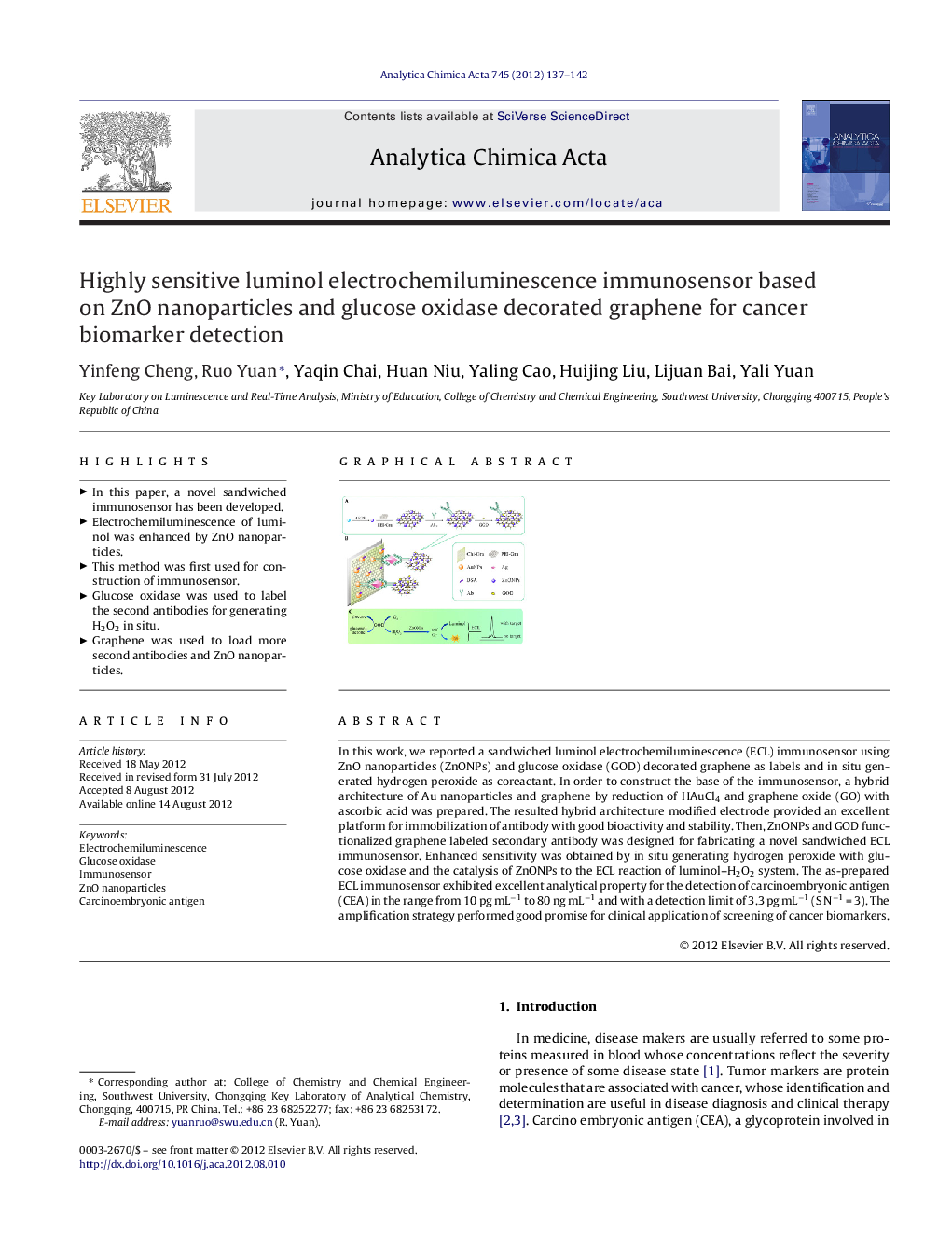| Article ID | Journal | Published Year | Pages | File Type |
|---|---|---|---|---|
| 1165713 | Analytica Chimica Acta | 2012 | 6 Pages |
In this work, we reported a sandwiched luminol electrochemiluminescence (ECL) immunosensor using ZnO nanoparticles (ZnONPs) and glucose oxidase (GOD) decorated graphene as labels and in situ generated hydrogen peroxide as coreactant. In order to construct the base of the immunosensor, a hybrid architecture of Au nanoparticles and graphene by reduction of HAuCl4 and graphene oxide (GO) with ascorbic acid was prepared. The resulted hybrid architecture modified electrode provided an excellent platform for immobilization of antibody with good bioactivity and stability. Then, ZnONPs and GOD functionalized graphene labeled secondary antibody was designed for fabricating a novel sandwiched ECL immunosensor. Enhanced sensitivity was obtained by in situ generating hydrogen peroxide with glucose oxidase and the catalysis of ZnONPs to the ECL reaction of luminol–H2O2 system. The as-prepared ECL immunosensor exhibited excellent analytical property for the detection of carcinoembryonic antigen (CEA) in the range from 10 pg mL−1 to 80 ng mL−1 and with a detection limit of 3.3 pg mL−1 (S N−1 = 3). The amplification strategy performed good promise for clinical application of screening of cancer biomarkers.
Graphical abstractFigure optionsDownload full-size imageDownload as PowerPoint slideHighlights► In this paper, a novel sandwiched immunosensor has been developed. ► Electrochemiluminescence of luminol was enhanced by ZnO nanoparticles. ► This method was first used for construction of immunosensor. ► Glucose oxidase was used to label the second antibodies for generating H2O2 in situ. ► Graphene was used to load more second antibodies and ZnO nanoparticles.
